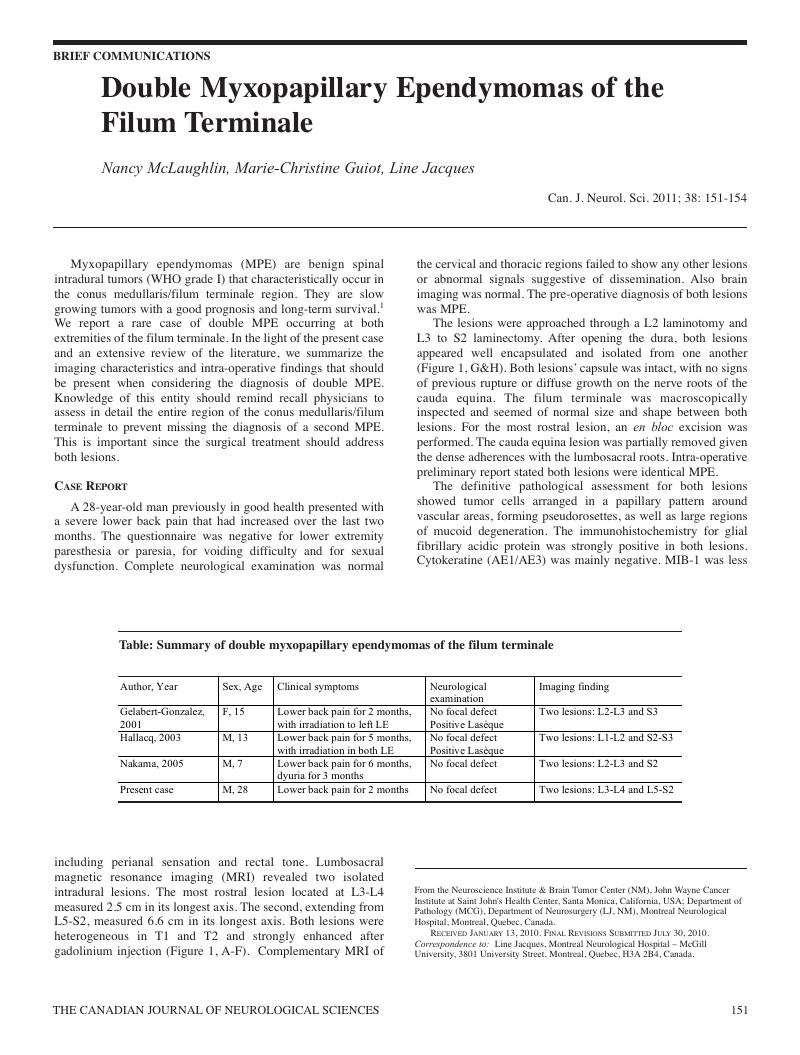Crossref Citations
This article has been cited by the following publications. This list is generated based on data provided by Crossref.
Yang, Wen‐sheng
Shao, Wei
Liu, Dan
Hu, Jun‐cheng
Lin, Zhen
Qi, Pei‐lin
and
Ji, Tian‐hai
2013.
25 Year‐Old Woman with Two Spinal Cord Lesions.
Brain Pathology,
Vol. 23,
Issue. 6,
p.
703.
Sundaram, Nina K.
Carluccio, Alessia
and
Geer, Eliza B.
2014.
Characterization of persistent and recurrent Cushing’s disease.
Pituitary,
Vol. 17,
Issue. 4,
p.
381.
Dallapiazza, Robert F.
Oldfield, Edward H.
and
Jane, John A.
2015.
Surgical management of Cushing’s disease.
Pituitary,
Vol. 18,
Issue. 2,
p.
211.
Yener, Ulaş
Güdük, Mustafa
Ekşi, Murat Şakir
Aytar, Murat Hamit
Sav, Aydın
and
Özgen, Serdar
2016.
Concomitant Double Tumors of Myxopapillary Ependymoma Presented at Cauda Equina-Filum Terminale in Adult Patient.
Korean Journal of Spine,
Vol. 13,
Issue. 1,
p.
33.
Casanueva, Felipe F.
Barkan, Ariel L.
Buchfelder, Michael
Klibanski, Anne
Laws, Edward R.
Loeffler, Jay S.
Melmed, Shlomo
Mortini, Pietro
Wass, John
and
Giustina, Andrea
2017.
Criteria for the definition of Pituitary Tumor Centers of Excellence (PTCOE): A Pituitary Society Statement.
Pituitary,
Vol. 20,
Issue. 5,
p.
489.
Khan, Nickalus R.
VanLandingham, Matthew
O'Brien, Thomas
Boop, Frederick A.
and
Arnautović, Kenan
2017.
Primary Seeding of Myxopapillary Ependymoma: Different Disease in Adult Population? Case Report and Review of Literature.
World Neurosurgery,
Vol. 99,
Issue. ,
p.
812.e21.
Pesce, Alessandro
Palmieri, Mauro
Armocida, Daniele
Frati, Alessandro
Miscusi, Massimo
and
Raco, Antonino
2019.
Spinal Myxopapillary Ependymoma: The Sapienza University Experience and Comprehensive Literature Review Concerning the Clinical Course of 1602 Patients.
World Neurosurgery,
Vol. 129,
Issue. ,
p.
245.
Xu, Feifan
Duan, Hongzhou
Li, Liang
and
Zhang, Jiayong
2021.
Ependymomas of Filum Terminale: Clinical Characteristics and Surgical Management of 5 Patients.
World Neurosurgery,
Vol. 146,
Issue. ,
p.
e597.
Tabor, Joanna K.
Ryu, Brendan
Schneider, Daniel
Sciubba, Daniel M.
Narayana, Ashwatha
Zlochower, Avraham
and
Amico, Randy S. D’
2022.
Multifocal lumbar myxopapillary ependymoma presenting with drop metastasis: a case report and review of the literature.
Spinal Cord Series and Cases,
Vol. 8,
Issue. 1,





